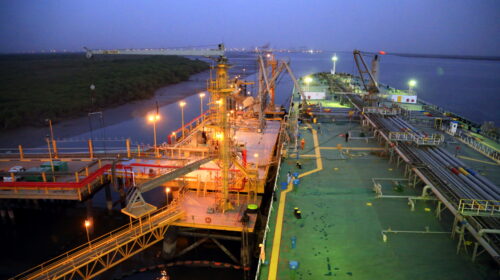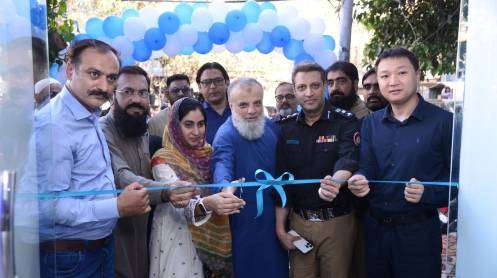Fauji Oil Terminal and Distribution Company (FOTCO) has plans to invest in developing six buffer storage tanks to address ship traffic congestion at Port Qasim and handle additional cargoes.
“We have already pitched this plan to Oil and Gas Regulatory Authority (OGRA) seeking finalisation of pricing mechanism,” Adnan Samdani, General Manager of FOTCO told The News in an exclusive interview on Sunday.
“Once it is settled, FOTCO will be able to finalise the volume of investment required to build the buffer storage tanks to handle the fuel ship carrying 50,000 tonnes of fuel in 24 hours.” Once the proposed six tanks were in place, the FOTCO would be able to handle three more fuel ships of 150,000 tonnes.
“Commissioned in 1995 with a total investment of $100 million, FOTCO is the state-of-the-art and fully integrated facility in the country to handle up to 12 million tonnes of fuel per annum. It has already invested $33 million for building storage of POL products up to 108,000 tonnes,” he said. FTTL, a subsidiary of FOTCO, had also invested Rs70 million to install headers to do away with the contamination.
To a question, Samdani said, “FOTCO handles 100 percent of ships of diesel and furnace oil and 45 percent of Mogas, as 55 percent of petrol ships are handled at KPT.” Right now, FOTCO handles 8.50 to 9 million tonnes of POL products a year. Its full potential is to handle 12 million tonnes of POL products in a year. There were some constraints, which the FOTCO management was working to resolve with the cooperation of Port Qasim Authority, Petroleum Division and OGRA.
“FOTCO currently handles 15-16 ships carrying POL products, but it has the capacity to handle 20 POL vessels,” FTCO GM added. Mentioning the constraints in the way of achieving 12 million tonnes of POL products, he said existing main navigation channel – Phitti Creek – was not enough to handle the ships. “Whenever LNG ships enter the channel, all other ships, including ones carrying POL products, are forced to anchor out of the channel for a long time resulting in congestion of traffic at the Port,” he said.
He explained since LNG vessels were too sensitive and highly inflammable, other ships were made to stay outside the main channel. The government should build another navigation channel at Port Qasim to ensure smooth flow of traffic and avoid congestion.
There was a proposal under active consideration of Port Qasim Authority to build alternate navigation channel namely Chara Chhan Waddo Creek. He urged the authorities concerned to make night navigation more effective with the inclusion of more pilots.
Asking for conducting simulation study and preparing a squad of pilots for steering the ships during night navigation, he said, “If this issue is resolved, the congestion at the Port will not only erode but it will also increase the capacity of FOTCO to handle 2-3 more ships.”
“We are also in touch with OCAC (Oil Companies Advisory Council) for becoming a strategic stakeholder of the fuel supply chain in the country,” he said. Samdani suggested OMCs (oil marketing companies) to use big ships having capacity up to 60,000 tonnes of fuel with increase in pumping rate from existing 2,000 tonnes per hour to 4,000 tonnes, arguing it would pave the way for reducing berthing time of a ship to 24 hours.
He said 48-hour berthing time was too high, and resulted in congestion at the port. He disclosed FOTCO wanted to use the jetty of Pakistan Steel Mills for berthing fuel ships and offloading their products.
The Ministry of Industries had allowed FOTCO to utilise the jetty, he said, adding, “Port Qasim Authority is also working on this issue as to whether there is need for dredging or not near the jetty of Pakistan Steel Mills.”
Mentioning diversification in terms of investment, he said FOTCO was a partner of PGPL LNG terminal and had invested over $30 million in the 14km RLNG pipeline infrastructure that connects the offshore jetty to Sui Southern Gas Company delivery point.







